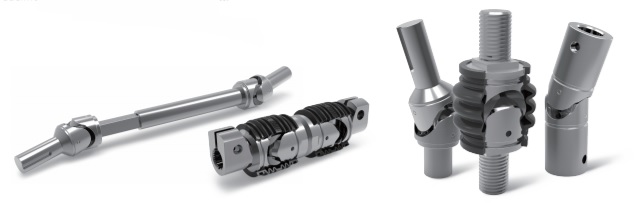Grease is what keeps moving parts in motion. Traditionally, u-joints are outfitted with lip seals to help retain the grease. The lip seal also allows for regreasing and usually acts as a barrier to prevent contaminants like dirt and moisture from getting into the unit.
Lip Seal Considerations
A lip seal sits against the surface of the central element trunnions. So when the trunnions oscillate, the seal glides on the outer diameter (OD) surface of each trunnion. Over time this will wear away the seal lip.
- Once the seal is compromised by wear, containments can cause the u-joint to malfunction.
- The amount of grease that a needle bearing u-joint can hold is very limited. So, even a small amount of containment can quickly break down the grease and cause the entire joint to freeze.
What is a Boot Seal?
A boot seal clamps on to the yoke and protects all moving components without rubbing against a surface. So there is not a wear point 
- Protection to all bearing surfaces.
- More space inside a boot seal allows for a larger volume lubricant.
- The boot seal is a maintenance-free design, sealing the u-joint for life.
A larger volume of grease allows the lubricant to absorb small amounts of containments. This makes small amounts of containments less of an issue than when they are present in a lip seal.
Bottom Line
Seals are important. The right seal for a universal joint will extend the service life while maintaining performance.
